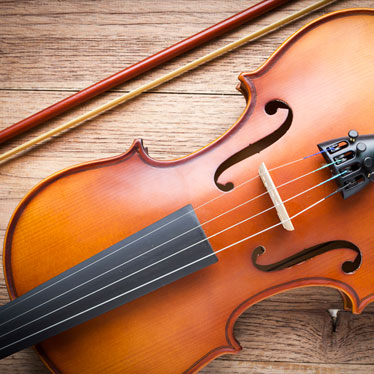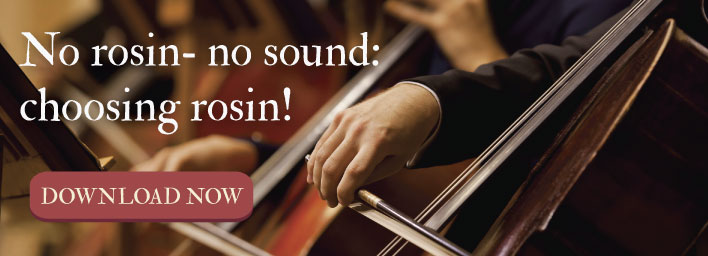5 Tips for Purchasing the Right Violin Strings

When you’re learning to play a string instrument like the violin, the strings you choose have a big impact on the sound you’re able to create. The type, gauge, and tension of your violin strings deliver both subtle and dramatic differences. Obviously, you’ll want to select strings that will make you sound your best and enable you to coax the most pleasing tones from your violin.
However, the right set of strings for your instrument depends on a number of factors. The materials used in your violin, how it’s been set-up, your playing ability, and the type of musical genre you prefer will all dictate the type of strings you need. Plus, there are so many different string varieties that without good guidelines, choosing the right violin strings can be a bit daunting.
These five tips will point you in the right direction and make your string challenge a little easier. You’ll need to remember that your optimum string combination will be unique for your instrument, but totally worth the effort. Finding the best set of strings will transform the quality of tone, responsiveness, and projection you can produce on your violin.
1. Know the Types of Strings
There are three major types of violin strings; gut, steel, and synthetic. Each type offers specific tonal virtues and maintenance requirements.
Gut Core: Gut strings are made from sheep intestine and wound with some type of metal (usually copper or silver). As an organic material, gut strings are very susceptible to changes in temperature and humidity. So although once they’ve stretched they’re relative stable, these violin strings usually require more frequent tuning. However, many professionals choose gut strings for the very warm, rich sound they create and complex overtones they produce. Their tension levels generate full volume, but these strings are less durable and more expensive that others.
Steel Core: For many years, steel core violin strings were the only alternative to gut. The metal core provides greater stability of pitch and is less likely to be affected by atmospheric changes, so they are easier to tune and require is less frequency in tuning. Steel strings have a brighter tone, and the sound they create is less complex than gut. This is the string of choice for many country, jazz and bluegrass musicians.
Synthetic Core: A relatively new innovation, synthetic core strings combine the warmth of gut with the stability of steel. After they’ve been stretched, they stay in tune and have great stability of pitch. Climate changes don’t effect the nylon or synthetic nylon (perlon) core, so these violin strings are becoming more and more popular with all levels of violinists. Their affordable price, excellent responsiveness, and splendid projection help beginners produce their best sound.
2. Understanding Gauges and Tensions
String gauge (or width) and tension play a key role in the projection and responsive qualities of the string. Typically, the wider the gauge the fuller (louder) the sound but the slower the response. Likewise, with thinner gauges you’ll have less projection and quicker response. Moreover, thicker strings require greater tension to bring them to pitch while thinner strings generally have less.
When you’re considering gauge and tension, most violinists choose medium ranges for both; but again, the specific gauge and tension you need will depend on your particular violin.
3. Evaluate you Musical Preferences
Before choosing your violin strings, think about the style and type of music that you like to play. As previously mentioned, certain genres sound better using certain string types. You may prefer the brilliant tones that steel strings create, or if your tastes lean toward classical, you may want to experiment with different synthetic core string varieties.
Thomastik Infeld fabricates a variety of strings, but their Dominant strings are one of the most popular brands because they offer great flexibility, warmth, and stability. Likewise, their Alphayue set is perfect for any violinist. For around $20, this durable, responsive string is an excellent choice for beginners.
4. Examine your Ability
When you're selecting violin strings, remember to correctly assess your playing ability. You want to choose a string combination that will enhance your skill, not make it more difficult to perform certain bowing and fingering techniques. If you’re unsure, speak with your instructor and ask for their recommendations.
5. Keep your Options Open
The strings you choose aren’t for life. Don’t be discouraged if you can’t nail it on the first try. Finding the best violin strings for your specific instrument may require some trial and error. For example, many violinists find that a certain style E-string works better on their violin than another type.
The key is to experiment and take your time. Once the strings you’ve chosen have been “played in,” note any problems or successes you experience. That way when it’s time to replace them, you can make corrections.

